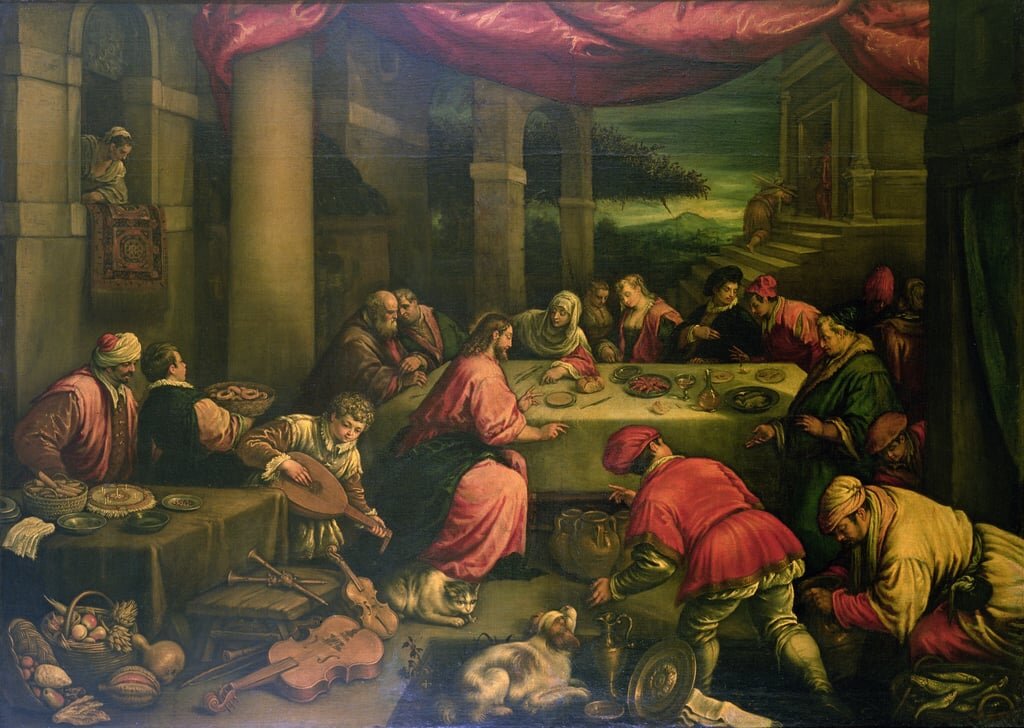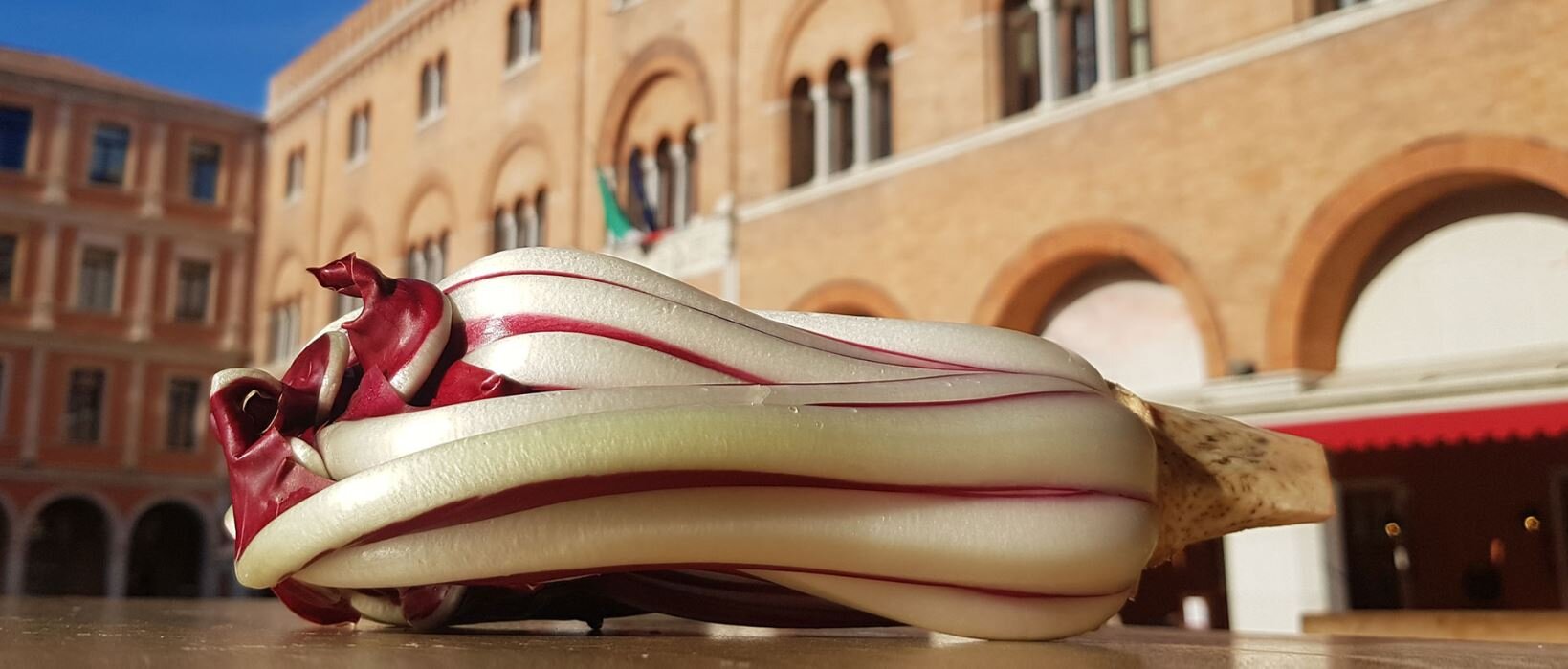Photo by Consorzio di Tutela del Radicchio Rosso di Treviso e Variegato di Castelfranco PGI
Cichorium Intybus is a type of chicory that has existed for centuries and centuries as a wild species, even though the exact year of its origin is lost among tales of ancient tradition and legends. Like the one that tells of some birds that supposedly brought the precious seed to our area in Dosson di Casier by dropping it on the bell tower of the village church.
Some iconographic studies show that it was already present in our territory as early as the 16th century. On this subject, let me reveal a curiosity: if you look at the painting The Wedding at Cana (ca. 1580), you will notice that Leandro Da Ponte painted baskets full of fruit and vegetables, and among them our Radicchio stands out.

"The Wedding at Cana" by Leandro da Ponte. Notice the Radicchio di Treviso at the bottom left, among the vegetables.
Many say that the blanching technique, which gives the distinctive feature of Radicchio Rosso di Treviso, is owed to nurseryman Francesco Van De Borre, who came to Treviso from Belgium in 1870 for work reasons and is said to have passed on the skills of blanching Belgian chicories. The floriculture company is still active today not far from the historic center of Treviso.
Legend or not, there is no doubt that it is the continuous work of selection and improvement of production techniques that make Radicchio Rosso di Treviso PGI the prince of winter and the symbol, together with Tiramisu, of Treviso cuisine and now known all over the world.
Today there are many Radicchio exhibitions scattered throughout the production area, included in the Fiori d’Inverno festival, but the first dates back to the early 1900s, thanks to Giuseppe Benzi, an agronomist of Lombard origin who, after moving to Treviso in 1876 and becoming head of the Treviso Agricultural Association, organized the first exhibition under the Loggia dei Trecento in Piazza dei Signori.
Don't forget that there are two types of Radicchio Rosso di Treviso PGI. Didn't know that? No problem... I'll tell you about it in another article soon!

